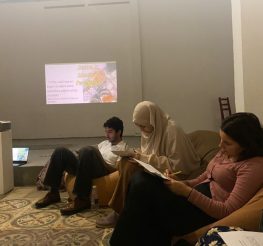11 Interesting Facts about the Suez Canal
egypt Suez Canal travel trending
Arwa Hezzah
The whole world has been talking about the crisis in the Suez Canal over the past week, with the Ever Given cargo ship being stuck diagonally across its width, blocking the vital passage for six days. With it being freed and becoming the talk of the world, it’s important to bring some attention to the facts and origins of the canal. For the 11th anniversary of Cairo 360, we’re listing 11 fun facts about the Suez Canal.
- It has origins found in Ancient Egypt
As history would have it, in around 1850 B.C., a canal was built connecting the Nile with the Red Sea. According to inscriptions found in Ancient Egyptian tombs, an Egyptian Pharaoh by the name of Senuset III constructed a canal that made its way through the desert to the Nile River as a means to access the Mediterranean Sea.
- It was opened in 1869
Construction of the Canal started in April 1859, after French diplomat and engineer Ferdinand de Lesseps succeeded in convincing Said Pasha to approve the project. At first, digging of the canal was done with picks and shovels. That, along with a few other issues, delayed its completion. It wasn’t until November 17th, 1869, that the canal finally opened for use.
- The Statue of Liberty was built for the Canal
After the Suez Canal was completed, French sculptor Frédéric-Auguste Bartholdi decided to build a statue to celebrate its success. The figure was due to be placed at the Mediterranean entrance of the canal, serving as a lighthouse for passing ships. The project never came to fruition, and it wasn’t until 1886 that Bartholdi unveiled his masterpiece in New York under the name “Liberty Enlightening the World.”
- Its developer also attempted to build the Panama Canal
Twelve years after the Suez Canal was finished, Ferdinand de Lesseps suggested building a canal over the Isthmus in Central America. With the Suez Canal being so successful, it wasn’t difficult for Lesseps to get support from investors and governments. Starting in 1881, the project faced many issues and calamities. Lesseps’ company eventually crashed in 1889, putting an end to the project for years to come.
- The British government opposed the project
While Lesseps gained the support of the Egyptian government, the added support he had garnered from French Emperor Napoleon III caused the British government to refuse to take part in the project, seeing the construction of the canal as a deliberate scheme to weaken British dominance over global shipping. Nevertheless, after the completion of the waterway, the British government bought all of Egypt’s shares.
- It was nationalised in 1956
After the canal was owned and controlled by the French and British governments for years, Egyptian President Gamal Abdel Nasser managed to nationalise the passage in July 1956. Although Nasser offered full economic compensation to both governments, the act caused outrage in the region.
- It was shut down After the Six-Day war
Ten years after the canal’s nationalisation, Egypt underwent a war against Israel. Following what became known as the Six-Day War, Egypt shut down the Suez Canal, using it as the frontline for the continuing battles between Egypt and Israel for the next eight years. It wasn’t until 1975 that Egyptian President Anwar El-Sadat reopened the canal.
- It takes 12-15 days to travel
The Canal was originally built to shorten the travel distance between the North Atlantic and the Northern Indian Oceans, thereby decreasing the distance between Europe and Asia and making trade and transportation more accessible. Without the canal, ships would have to travel around the Cape of Good Hope, which would take up to 26 days. Luckily, the trip through the canal only takes 12 to 15 days to complete.
- It is now 193 KM long and 205 meters wide
When it was first built, the canal was about 164 km long and eight metres deep. After an expansion project in 2015, an extra 29 km of length was added through a parallel waterway. Moreover, existing parts of the canal were deepened and widened, making the project’s total expansion about 72 km.
- SCzone aids investment in the Suez Canal
SCzone, the canal’s investment zone aimed at providing an investor-friendly environment for business transactions, currently houses over 192 enterprises that add up to about $25 billion in worth. SCzone’s goal is to reach up to $55 billion in investments by the year 2036. Revenues of the Suez Canal have seen successes, having increased by 5.4% from 2018 to 2019, gaining over $300 billion.
- Workers removed 30,000 cubic meters of sand to unclog the Canal
In order to free the Ever Given in March 2021, hundreds of workers laboured tirelessly to remove up to 30,000 cubic metres of sand from around the ship using diggers. While workers diligently removed sand on the shore, tugboats and dredgers helped rotate the massive ship to finally free it. If it hadn’t been for the undying spirit and determination of the workers, the canal would still be blocked today.
recommended
 Cafés
Cafés
Bakeries in Maadi: 5 Spots for Winter Cravings and Baked Comfort
204 Bakery & Coffeehouse Bakeries in Maadi +6 City Life
City Life



